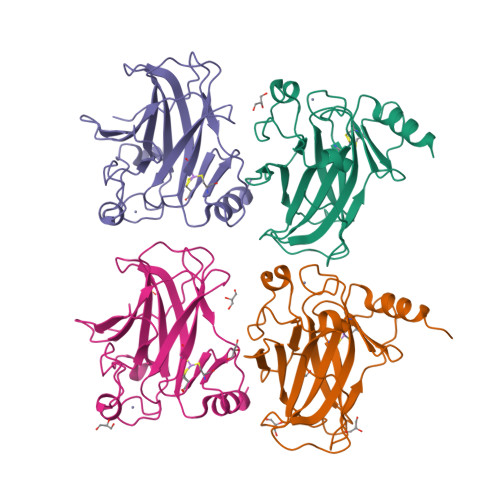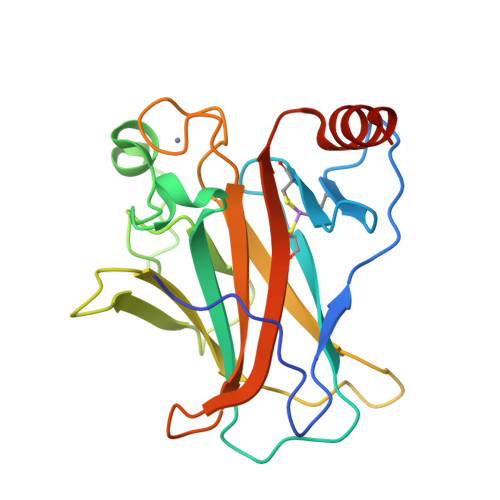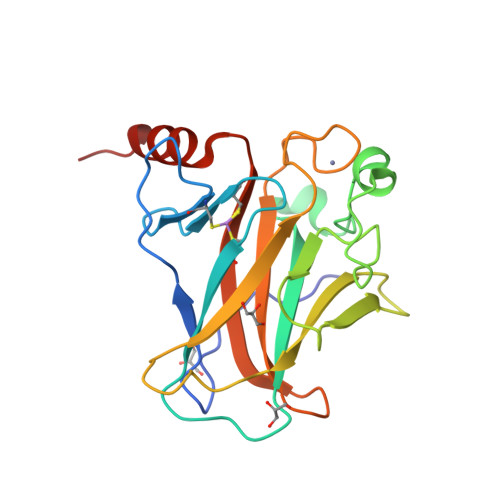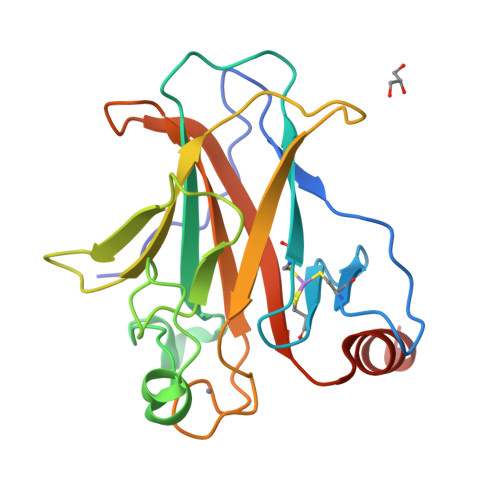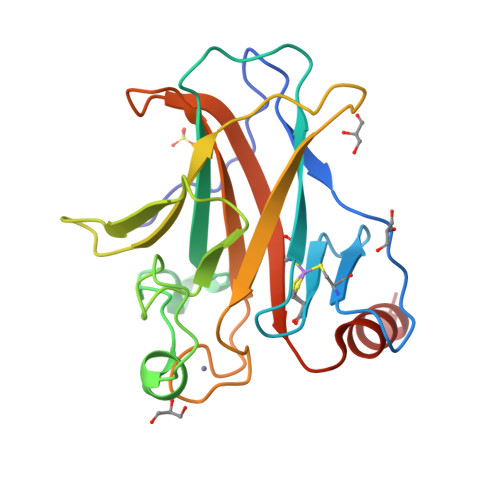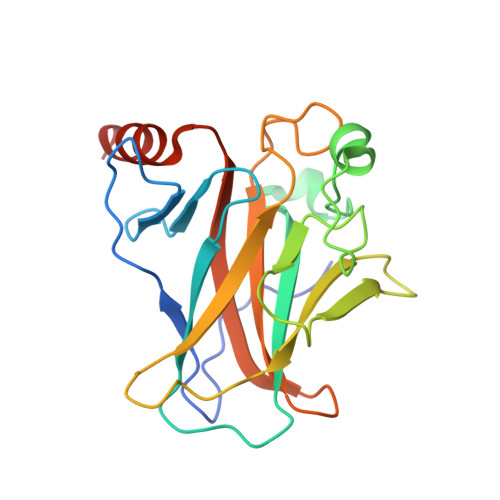Arsenic Trioxide Rescues Structural p53 Mutations through a Cryptic Allosteric Site.
Chen, S., Wu, J.L., Liang, Y., Tang, Y.G., Song, H.X., Wu, L.L., Xing, Y.F., Yan, N., Li, Y.T., Wang, Z.Y., Xiao, S.J., Lu, X., Chen, S.J., Lu, M.(2021) Cancer Cell 39: 225-239.e8
- PubMed: 33357454
- DOI: https://doi.org/10.1016/j.ccell.2020.11.013
- Primary Citation of Related Structures:
7DHY, 7DHZ - PubMed Abstract:
TP53 is the most frequently mutated gene in cancer, yet these mutations remain therapeutically non-actionable. Major challenges in drugging p53 mutations include heterogeneous mechanisms of inactivation and the absence of broadly applicable allosteric sites. Here we report the identification of small molecules, including arsenic trioxide (ATO), an established agent in treating acute promyelocytic leukemia, as cysteine-reactive compounds that rescue structural p53 mutations. Crystal structures of arsenic-bound p53 mutants reveal a cryptic allosteric site involving three arsenic-coordinating cysteines within the DNA-binding domain, distal to the zinc-binding site. Arsenic binding stabilizes the DNA-binding loop-sheet-helix motif alongside the overall β-sandwich fold, endowing p53 mutants with thermostability and transcriptional activity. In cellular and mouse xenograft models, ATO reactivates mutant p53 for tumor suppression. Investigation of the 25 most frequent p53 mutations informs patient stratification for clinical exploration. Our results provide a mechanistic basis for repurposing ATO to target p53 mutations for widely applicable yet personalized cancer therapies.
Organizational Affiliation:
Shanghai Institute of Hematology, State Key Laboratory of Medical Genomics, National Research Center for Translational Medicine (Shanghai), Ruijin Hospital affiliated with Shanghai Jiao Tong University School of Medicine, Shanghai 200025, China; Ludwig Institute for Cancer Research, Nuffield Department of Medicine, University of Oxford, Oxford OX3 7DQ, UK.








